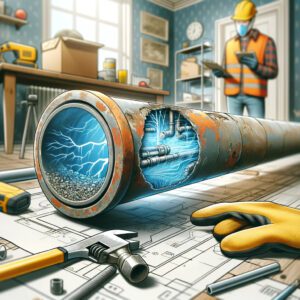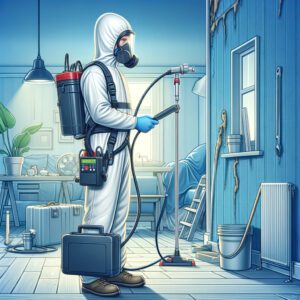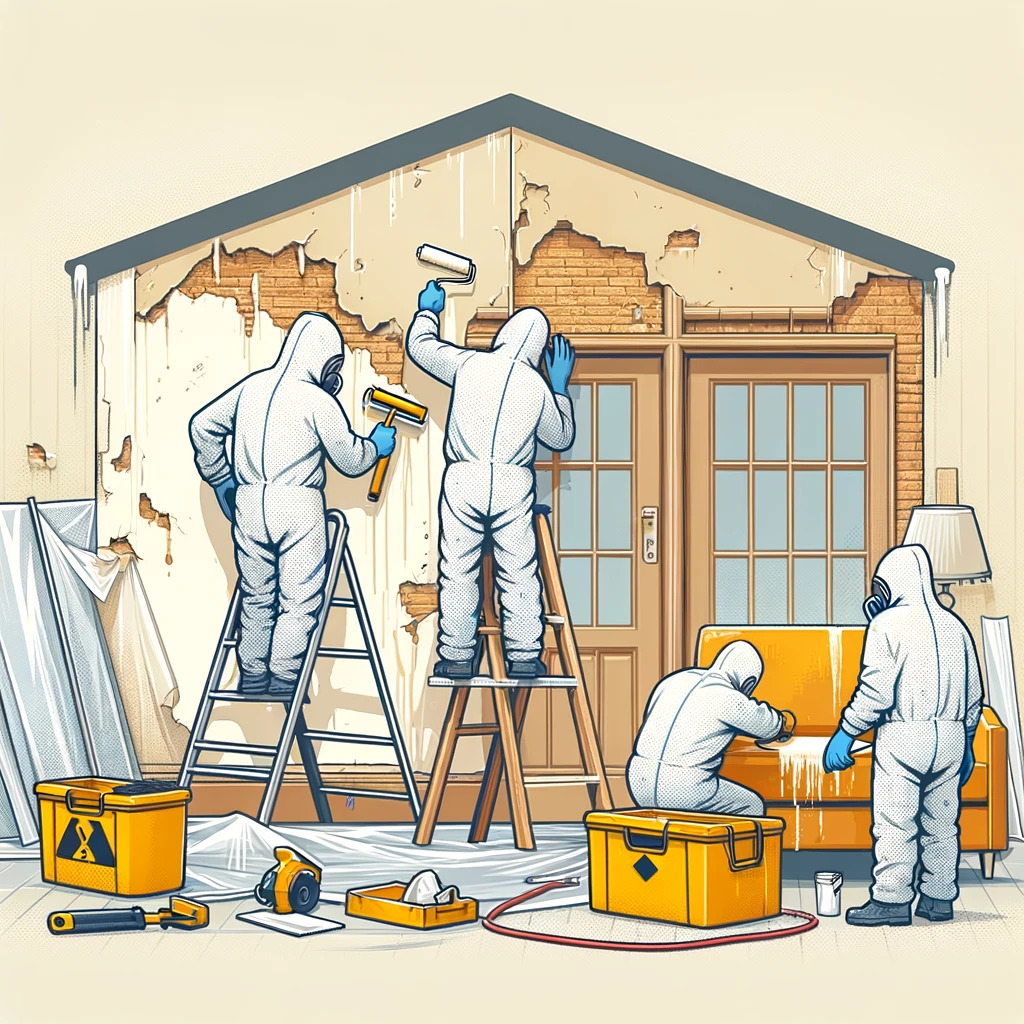Lead Poisoning Risk in Renovation: How to Handle Paint and Pipes
Article on behalf of RenovationServices.com
Introduction
Venturing into the realm of home renovation can be as exciting as it is daunting. Among the myriad considerations for modernizing an aging abode lies a silent adversary: lead. This toxic element, once ubiquitously used in residential construction, poses significant health risks, particularly in homes built before the 1978 U.S. ban on lead-based paint. Unveiling the layers of old paint and replacing archaic pipes is not merely a matter of aesthetics or functionality but one of health and safety. This article, presented by RenovationServices.com, aims to guide you through the complexities of mitigating lead poisoning risks during your renovation endeavors.
The Legacy of Lead in Homes
For decades, lead was a common ingredient in house paints and plumbing systems due to its durability and malleability. Its legacy endures in the form of lead-based paints that cling to the walls and ceilings of our living spaces and in the lead pipes that carry water to our faucets. Disturbing these materials during renovations can release lead particles into the air and water, posing a risk of lead poisoning.
Identifying and Testing for Lead
Before you begin tearing down walls or ripping out pipes, identifying the presence of lead is a crucial first step. Lead paint may be lurking beneath layers of newer paint, and lead pipes may be hidden behind updated plumbing fixtures. Lead testing kits are readily available and can provide a preliminary assessment, but for a thorough evaluation, especially in extensive renovation projects, enlisting the services of a certified lead inspector is recommended.

Safe Practices for DIY Enthusiasts
If you’re tackling renovations on your own, it’s vital to follow lead-safe practices:
- Containment: Seal off the work area with plastic sheeting to prevent the spread of lead dust.
- Personal Protective Equipment (PPE): Wear approved respirators, gloves, and disposable coveralls.
- Wet Methods: Use wet sanding and misting to minimize dust.
- Clean-Up: Employ a HEPA-filtered vacuum to clean the work area and dispose of contaminated materials properly.
The Role of Lead Abatement Professionals
In many cases, the safest option is to hire certified lead abatement professionals. These experts understand the intricacies of lead removal and can ensure that your home is not only renovated to your liking but also free of lead contamination. They utilize advanced techniques and equipment to safely and effectively remove lead from your home.
Understanding the Health Implications of Lead
Lead is a potent neurotoxin, particularly harmful to children and pregnant women. It can cause irreversible cognitive deficits, developmental delays, and behavioral problems. In adults, lead exposure can result in hypertension, kidney damage, and reproductive issues. Understanding these risks underscores the need for meticulous handling of lead in any renovation project.

Legal and Regulatory Considerations
Compliance with local and federal regulations is non-negotiable when dealing with lead. The U.S. Environmental Protection Agency (EPA) enforces the Renovation, Repair, and Painting (RRP) Rule, which stipulates that contractors performing renovation, repair, and painting projects that disturb lead-based paint in homes, child care facilities, and schools must be certified and follow specific work practices to prevent lead contamination. Familiarize yourself with these regulations to ensure compliance and avoid hefty fines.
Renovating Lead-Contaminated Plumbing
Lead pipes, once a staple in plumbing, can leach lead into drinking water, posing a significant health risk. The Safe Drinking Water Act (SDWA) has reduced the maximum allowable level of lead in public water systems, but it’s up to homeowners to replace the lead-containing plumbing components in their homes. Options include:
- Pipe Replacement: Completely replacing all lead pipes with safer materials.
- Pipe Lining: Applying a lining to the interior of lead pipes to prevent leaching without full replacement.
The Role of Education in Lead Safety
Awareness and education are critical components in preventing lead poisoning. Homeowners planning renovations should educate themselves on the dangers of lead and the proper safety measures to take. Free resources are available from the EPA and local health departments, providing valuable information on identifying lead hazards and protecting against lead exposure.
Integrating Lead Safety into Renovation Planning
As you sketch the blueprints for your dream home, integrating lead safety into the renovation plan is crucial. This is not merely a precaution but a necessity for ensuring that the end result is a safe haven. Renovation planning should include:
- Risk Assessment: Schedule a lead inspection or risk assessment before beginning work, particularly if your home was built before 1978.
- Budgeting for Safety: Allocate funds for lead abatement or containment within your renovation budget.
- Timeline Consideration: Lead abatement can add time to your project. Plan accordingly to avoid rushed and unsafe work practices.
Source Documentation and Further Reading
Educating yourself and staying updated on lead safety is an ongoing process. For the most current information, guidelines, and legal requirements, always refer to official government resources:
- U.S. EPA’s Lead Renovation, Repair, and Painting Program Guidelines (epa.gov/lead)
- Centers for Disease Control and Prevention on Lead Poisoning Prevention (cdc.gov/nceh/lead)
- U.S. Department of Housing and Urban Development Office of Lead Hazard Control and Healthy Homes (hud.gov)
By consulting these sources, you ensure that you are adhering to the highest standards of safety and compliance.
Long-Term Benefits of Lead-Safe Renovations
Investing in lead-safe renovations is not only about compliance and immediate safety—it’s about the long-term health benefits and peace of mind. Lead-safe homes can contribute to:
- Enhanced Cognitive Development: Children in lead-safe environments have a better foundation for learning and development.
- Increased Property Value: Homes free of environmental hazards like lead are more attractive to informed buyers.
- Community Health: By reducing the presence of lead, you contribute to the overall well-being of your neighborhood and community.

Expert Lead Inspection in Action.
Final Words
The journey of renovation is a path to creating a space that reflects your tastes and meets your needs. However, the true success of this journey is measured by the safety and health of the environment you create. As you peel back the layers of the past, ensure that you are not exposing your future to the toxins of yesteryear.
RenovationServices.com stands with you, offering guidance, resources, and professional advice to ensure your renovation journey is safe, compliant, and successful. Remember, when it comes to lead, an ounce of prevention is worth more than a pound of cure.
For more guidance on lead-safe renovation practices and to access a wealth of resources, visit us at RenovationServices.com—where your home’s past and future safety is our top priority.
Conclusion
The threat of lead poisoning in home renovations is a serious concern but one that can be effectively managed with knowledge, vigilance, and the right approach. By recognizing the dangers, employing safe work practices, and understanding when to seek professional help, you can ensure that your home renovation not only enhances the aesthetic and functional appeal of your property but also protects the health and well-being of your family.
RenovationServices.com is dedicated to helping you navigate the complexities of renovating with lead. With comprehensive guides, professional advice, and a commitment to safety and excellence, we ensure that your renovation projects are carried out to the highest standard, free from the risks associated with lead exposure. For more information and resources on lead-safe renovation practices, visit RenovationServices.com.






